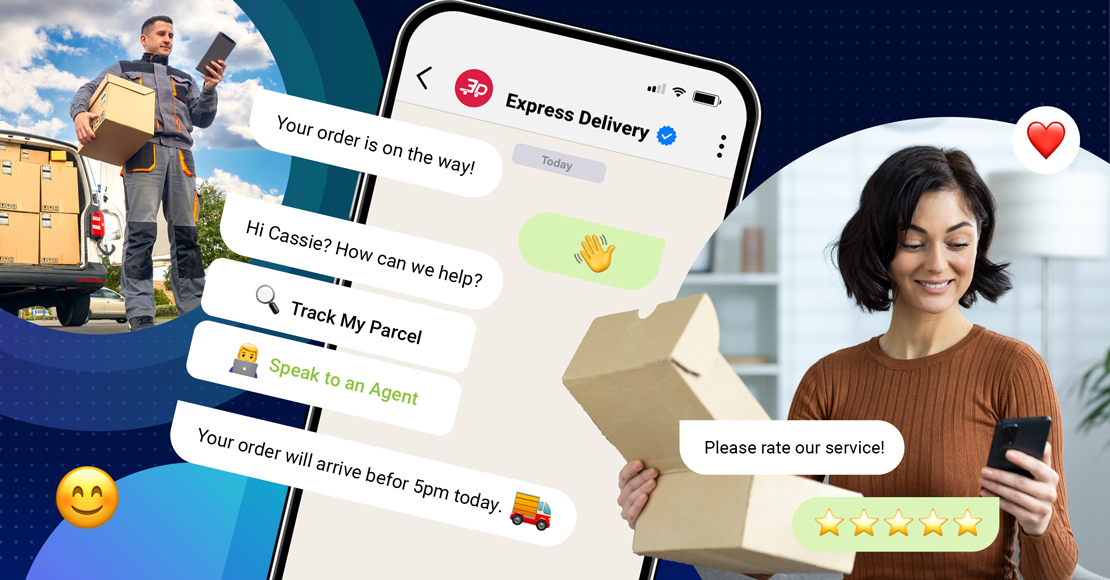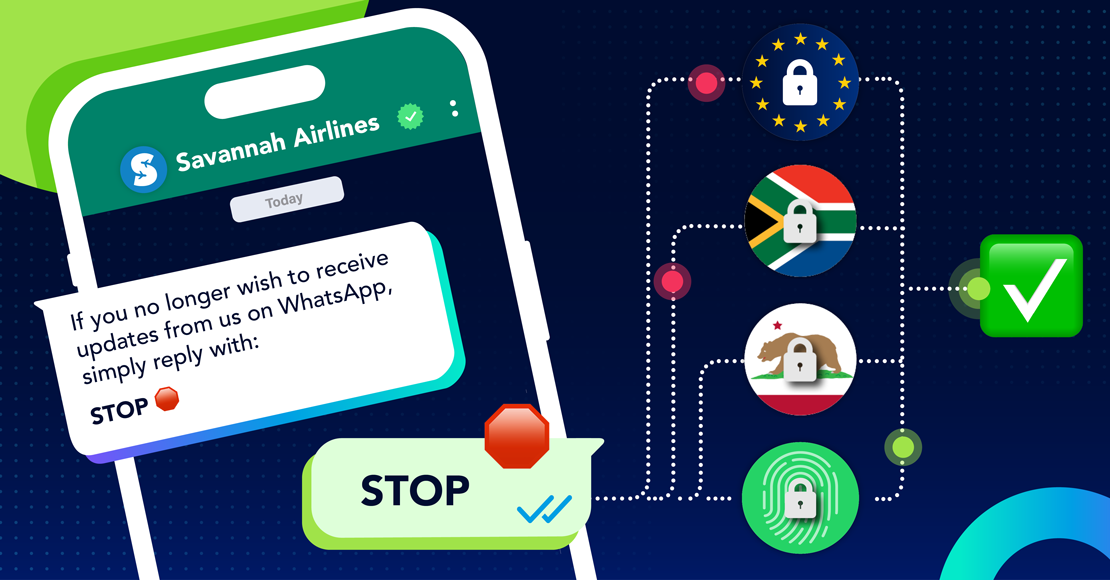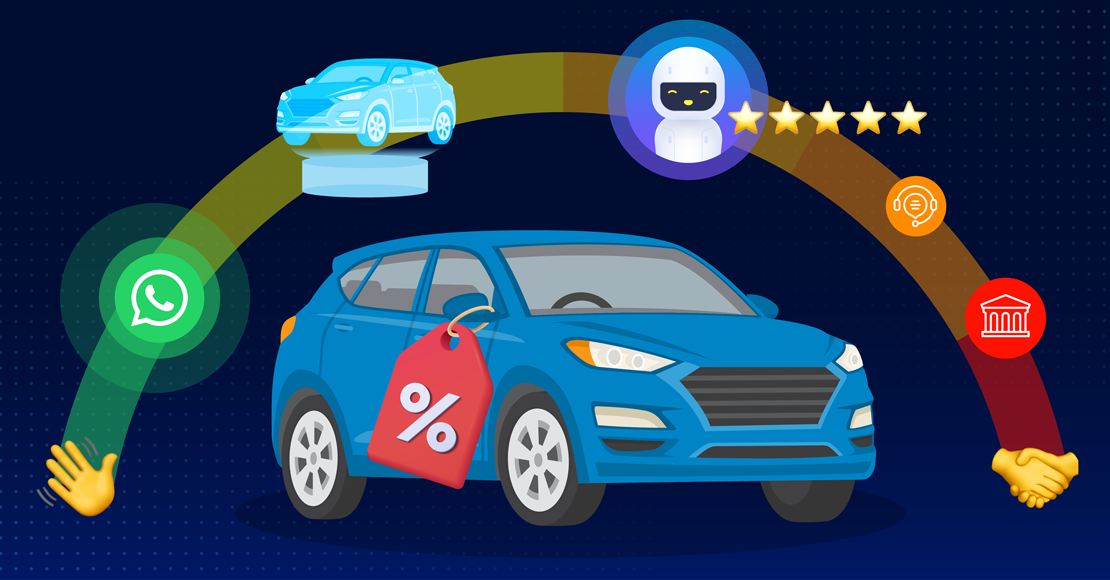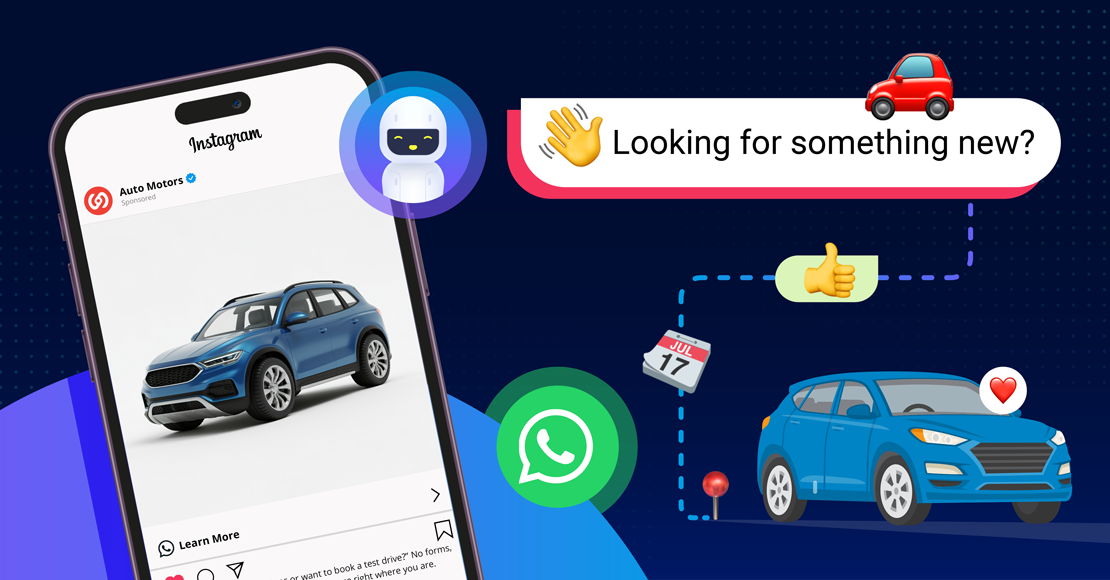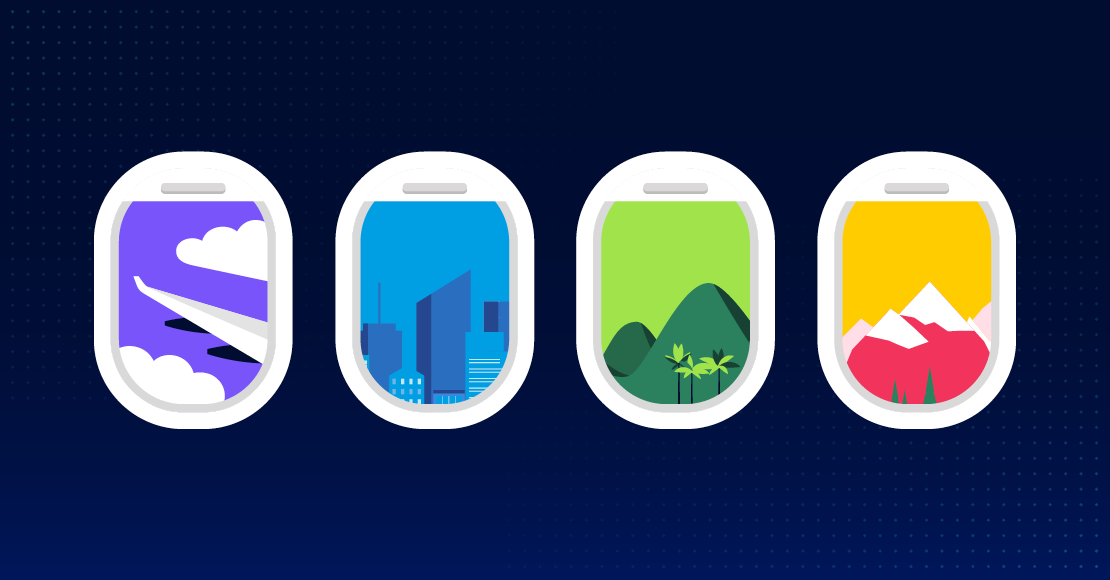
The air travel landscape has undergone eventful change in recent years, ushering in a new era of possibilities and challenges for airline brands and their passengers. And in order to maintain a competitive edge in this cutthroat industry, airline companies must now prioritize offering memorable customer experiences.
While strategies like personalized messages or loyalty program improvements are imperative, those tactics are just the tip of the iceberg. In order for those changes to take off and produce results, airline brands need to know exactly who they’re talking to. This means having a full understanding of the modern traveler and what they’re looking for.
It’s time for airline brands to re-evaluate their customer base and adapt the ways they’re speaking and marketing to them.
In this guide, we’re breaking down four emerging traveler profiles and exploring innovative ways to connect with them.
Your brand is likely familiar with the skilled worker shortages in the travel and hospitality industries in the current economy. It’s one of the biggest circumstances that have significantly impacted air travel in the last three years—circumstances that are leaving customers more frustrated with airlines than ever before. In today’s travel landscape, it’s never been more important for airlines and travel brands to connect with their current clients, secure loyalty from brand newcomers, and optimize overhead costs.
Luckily, emerging technologies like SMS chat can ease some of the most common pain points for today’s airlines. Let’s explore how new marketing approaches can help airlines reach various types of travelers—and what makes each of these flyers tick.
#1 Premium travelers
Since 2020, economic fluctuations caused many individuals to deprioritize travel. But not every economic class took a hit:
Many middle- and upper-middle-class families actually saved money during the pandemic. Reduced childcare costs (as a result of working from home and childcare facility closures) particularly bolstered some families’ savings between 2020 and 2021. Moreover, postponed trips during the height of the pandemic led to larger travel budgets.
The pandemic produced a new billionaire every 30 hours; the wealthy still made money during COVID-19.
“Isolation” during the first year of the pandemic looked different for the wealthy. Many jetted to the countryside or far-flung, remote locales to avoid densely-populated cities during 2020 and 2021.
One of the most important lessons airlines can take away from the COVID-19 pandemic is that there will always be premium travelers: those who have disposable funds or those who can afford to take that getaway or trip, no matter the cost.
Airlines should also note some important distinctions between premium travelers and other customers:
Premium travelers overwhelmingly rely on information they can find online, particularly from sources like TripAdvisor.
Compared to once-a-year vacationers, premium travelers care more about the cultural offerings available at their destination—like fine dining, shopping opportunities, and immersion experiences.
Premium travelers are more open to embracing novel technologies and “disruptor” business models. Novelty is appealing for premium travelers, especially if it's functional.
Marketing to the premium traveler
All that said, what can airlines do to leverage premium travelers’ preferences in their marketing campaigns? Consider the following tactics for attracting premium clientele:
Personalization – In a recent study, 72% of consumers said that they expect personalization from their favorite brands. Integrate customers’ names (or even their travel preferences based on their previous trips) in your next mobile messaging campaign.
Leverage exclusivity – Using exclusivity is advantageous if you’re trying to boost enrollment or engagement for your customer loyalty rewards program. Using language like “Only members have access to this exclusive offer” can make premium travelers feel like they’re accessing or receiving something that’s in highly limited supply.
Highlight bundles – Creating (and marketing) all-inclusive flight packages can provide additional convenience for customers or increase their perception of your product’s value. Your all-inclusive bundle could include upgrades like prepaid food and drinks, Wi-Fi, early boarding, business or first-class seats, or premium in-flight entertainment.
Incorporate travel tips and insights – Consider marketing airfare in tandem with travel insights. For instance, entice travelers with information about valuable cultural experiences (like must-visit sights or exclusive dining opportunities) while advertising your available flights to an area.
#2 Bleisure travelers
Bleisure travel (trips taken for a combination of business and leisure) is only increasing in popularity while traditional business travel continues to see a gradual decline that is unlikely to rebound to pre-pandemic levels.
Generally speaking, bleisure travelers take trips primarily for work, but either:
Tack on an extra day for leisure activities, or
Incorporate leisure activities during their business itinerary
This begs a couple of key questions: What are the biggest differentiators between a business traveler and a leisure traveler? What are both groups looking for in a travel experience, and what happens when these preferences combine during one trip?
The traditional business traveler purchases a ticket primarily for work purposes: to attend a meeting, participate in a conference, or perform responsibilities related to their job. Business travelers typically look for:
Efficient itineraries – Business travelers are often traveling during work hours, so they’re likely to choose the fastest itinerary to optimize their time.
Business-friendly amenities – In-flight Wi-Fi, quiet lounges, and free internet access in their accommodations all support work functions while traveling.
Group booking – If a business traveler is trying to coordinate with a few coworkers (or even an entire department), they’ll likely turn to brands that make it easy for multiple travelers to book together, choose seats close together, or stay in adjoining hotel rooms.
Leisure travelers, on the other hand, prioritize:
The best prices – High airfare prices have kept leisure travelers from taking trips in the aftermath of the COVID-19 pandemic. Today’s tourists are looking for the most economical options.
Flexibility – Many leisure travelers look for flexible tickets (which can be refunded if they have to cancel their trip), seat assignments (or even seats assigned by section instead of by seat), or even dinner reservations.
Destination experiences – Leisure travelers are focused on reaching exciting destinations and finding fun things to do once they arrive.
In bleisure travel, flyers are looking for a combination of these elements when they choose a travel brand. Some of the most important factors for bleisure travelers are:
Efficiency
Work amenities
Group booking convenience
Destination experiences
Marketing to the bleisure traveler
Bleisure travelers are booking tickets to accomplish two goals: work and play. As you market to these types of travelers, consider:
Convert business travelers to bleisure travelers – Encourage travelers to extend their stay by offering later flight options or extra hotel nights for a lower price. Or, upsell flight tickets with discounts or perks and allow travelers to bring their partner along for the experience.
Emphasize cost-effectiveness while promoting upgrades – If their employer is footing the bill, some or all of the traveler’s trip is already paid for. Bleisure travelers may be open to spending more of their own money with their basic expenses already covered. Consider promoting upgrades or add-ons that these travelers normally wouldn’t splurge on for a purely recreational trip, like extra leg room, in-flight entertainment, food or drinks.
Advertise destination experiences – Consider bundling your business airfare with destination excursions like wine tastings, walking tours, or theme park tickets. Make it easy for these travelers to select activities and not have to worry about planning or logistics after a working day.
Promote flexible reservation policies – Communicate with your bleisure travelers by SMS to encourage them to extend their stay (even if their original itinerary didn’t accommodate leisure). Use your flexible reservations policy as a selling point with language like, “Reschedule your return ticket for free,” or “Add an extra day to explore for only $199.”
Most importantly, keep up with bleisure travel trends as you market to these types of flyers. If a new attraction pops up in a frequent business conference location or major metropolis, use it as a tool to encourage business travelers to extend their stays.
#3 SME business travelers
Small- and medium-sized enterprise (SME) business travelers are distinct from traditional corporate travelers in a few ways:
They’re more focused on cost – An SME might not have the budget to fly its employees to a conference in business class. As SME business travelers search for tickets, they keep a close eye on the price.
They may be traveling solo – If a company only has ten or twenty employees, they may only be sending one of their team members to a conference or business meeting.
They are likely more pressed for time – If an SME business traveler is only hopping on a plane for a sales pitch, they may be looking at same-day return flights so they can be back at their desk the next morning.
SME business travelers are prime targets for loyalty-building efforts. Individual travelers are more likely to make their own reservations (instead of getting help from executive assistants or business travel managers), so their personal preferences are more impactful in their travel decision-making. Offering loyalty perks to SME business travelers can help convince them to choose your airline (or rack up rewards they can use on their next trip).
Marketing to the SME business traveler
While we already mentioned leveraging loyalty programs to market to SME business travelers, airlines can also use the following tactics to boost SME business travel bookings as well:
Emphasize airport perks – If an SME business traveler is departing and returning on the same day, they’re unlikely to reserve a hotel room. Flexing your well-appointed or convenient airport lounge (where this type of traveler may be spending most of their downtime) could convince them to choose your brand over a competitor.
Market baggage policies – If you offer a free checked bag or low-cost gate check, this might be especially appealing to SME business travelers (who are minding their costs).
Don’t forget about bleisure potential – Even if a business traveler has a 9:00 am arrival and a 3:00 pm departure on the same day, they might still have downtime to check out a recreational experience with one of your partner brands. Offer discounts at partner restaurants or local attractions where they can spare a couple of hours.
#4 “Work from anywhere” travelers
The data is clear: Remote work is here to stay. Researchers estimate that at least 25% of all U.S.-based jobs were remote by the end of 2022 compared to 4% before the COVID-19 pandemic.
But airlines shouldn’t view this shift as “work from home.” Instead, they should reframe remote working as “work from anywhere.” If your most frequent flyers can work from anywhere, why can’t they work from an exciting travel destination?
“Work from anywhere” travelers have even flattened the “peaks” of high-traffic travel days (like the Friday before Memorial Day weekend), opting for more affordable midweek departures because they don’t have to physically be in their office anymore. Shifts like these are crucial for airlines and other travel brands to monitor as they create and tweak their marketing approaches.
Marketing to the “work from anywhere” traveler
Marketing to “work from anywhere” travelers is similar to marketing to bleisure customers. But, many bleisure travelers are primarily traveling for work, while “work from anywhere” travelers are primarily looking for a travel destination that can simply accommodate remote working.
With that in mind, consider the following ideas for marketing to “work from anywhere” customers:
Encourage “work from anywhere” travelers to actually work from anywhere – While many remote workers may know that they can theoretically work from anywhere, craft marketing narratives and build stories that make this possibility a reality for these travelers. Use messaging like, “Why work from home when you could work from the beach, the mountains or the ski lodge?”
Create a “work from anywhere” bundle – Bundle and market amenities that prioritize the remote worker. Consider offering an all-inclusive ticket with in-flight Wi-Fi, a car rental, and a reservation at a hotel with a business lounge. Or, team up with co-working spaces to provide discounted passes for your travelers.
Advertise destinations in customers’ native time zones – One logistical challenge of “work from anywhere” is local time differences and ensuring their daily schedule matches their coworkers. Personalize your marketing efforts by advertising destinations within the same time zone or with a limited time difference.
Takeaways
To encourage traveler engagement and build airline brand loyalty, your business needs to connect with clients in ways that match their travel preferences and needs.
Consider leveraging mobile messaging as a tool to capture all the strategies we’ve presented here. Countless brands are now using SMS to connect with their customers, but text messaging is particularly valuable for travel brands.
Research shows that 87% of consumers (across Gen Z, Millennial, Gen X, and Baby Boomer generations) want to primarily connect with travel brands via mobile messaging. From tasks like booking seats and upgrades to getting itinerary updates, consumers are eager to use SMS chat for self-service, customer support, and travel-related questions.
Reach travelers with Clickatell
If your brand is ready to leverage SMS as a sales, marketing, or customer support channel, Clickatell is here to help. We have over 20 years of industry experience in customer connection, and our platform is uniquely positioned to support the demands of airline and travel businesses.
Partnering with a global leader in chat commerce can help you improve your customer experiences and boost revenue. Contact us to get started on your mobile messaging journey.
Step into the future of business messaging.
SMS and two-way channels, automation, call center integration, payments - do it all with Clickatell's Chat Commerce platform.


